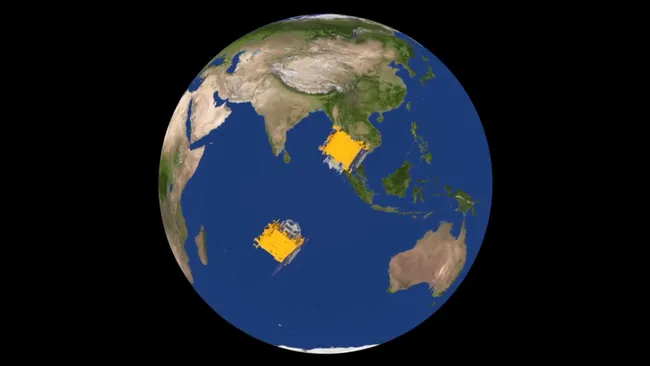 By Our Special Correspondent
-
: Jan 18, 2025 -
: 1:30 am
By Our Special Correspondent
-
: Jan 18, 2025 -
: 1:30 am
India has become the fourth country, after Russia, China and the United States, to achieve successful “space docking” capabilities, essential for critical future human and space missions.
“It’s a historic moment; the spacecraft docking has been successfully completed.,” said an Indian Space Research Organisation (ISRO) official. The mission will be a forerunner for autonomous docking needed for future lunar missions like Chandrayaan-4 without the support of GNSS from Earth, he added.
“Aboard a PSLV-C60 rocket, ISRO sent two satellites, called Chaser and Target, each weighing about 220kg (485lb) to space on December 30,” the official said, explaining the docking process. “The Indian mission was dubbed Space Docking Experiment (SpaDeX). The two satellites separated in space and flew flew 470km (292 miles) above Earth, where they were carefully placed in the same orbit – but about 20km (12 miles) apart. There, they tested a range of manoeuvres to prepare for the docking.
“Manoeuvre from 15m to 3m hold point completed. Docking was initiated with precision, leading to successful spacecraft capture. Retraction was completed smoothly, followed by rigidisation for stability. And the docking was successfully completed,” the official informed. The “successful separation of SpaDeX satellites” marked another milestone in India’s space journey.
SpaDeX mission is a cost-effective technology demonstrator mission for the demonstration of in-space docking using two small spacecraft launched by PSLV. The technology is essential for India’s space ambitions such as Indian on Moon, sample return from the Moon, the building and operation of Bharatiya Antariksh Station (BAS), etc. In-space docking technology is essential when multiple rocket launches are required to achieve common mission objectives.
The primary objective of the SpaDeX mission is to develop and demonstrate the technology needed for rendezvous, docking, and undocking of two small spacecraft (SDX01, which is the Chaser, and SDX02, the Target, nominally) in a low-Earth circular orbit. Secondary objectives include demonstration of the transfer of electric power between the docked spacecraft, which is essential for future applications such as in-space robotics, composite spacecraft control, and payload operations after undocking.
Like all ISRO satellites in low-Earth orbit, both the SpaDeX spacecraft carry a differential GNSS-based Satellite Positioning System (SPS), which provides PNT (Position, Navigation, and Timing) solutions for the satellites.

Headquartered in Singapore with reporters spread across all major regions, GBP Aerospace & Defence is a leading media house that publishes three publications that serve the aerospace and defence sector - Asian Defence Technology, Asian Airlines & Aerospace and Daily News. Known industry-wide for quality journalism, GBP Aerospace & Defence is present at more international tradeshows and exhibitions than any other competing publication in the region.
For over three decades, our award-winning team of reporters has been producing top-notch content to help readers stay abreast of the latest developements in the field of commercial aviation, MRO, defence, and Space.
Copyright 2024. GBP. All Rights Reserved.